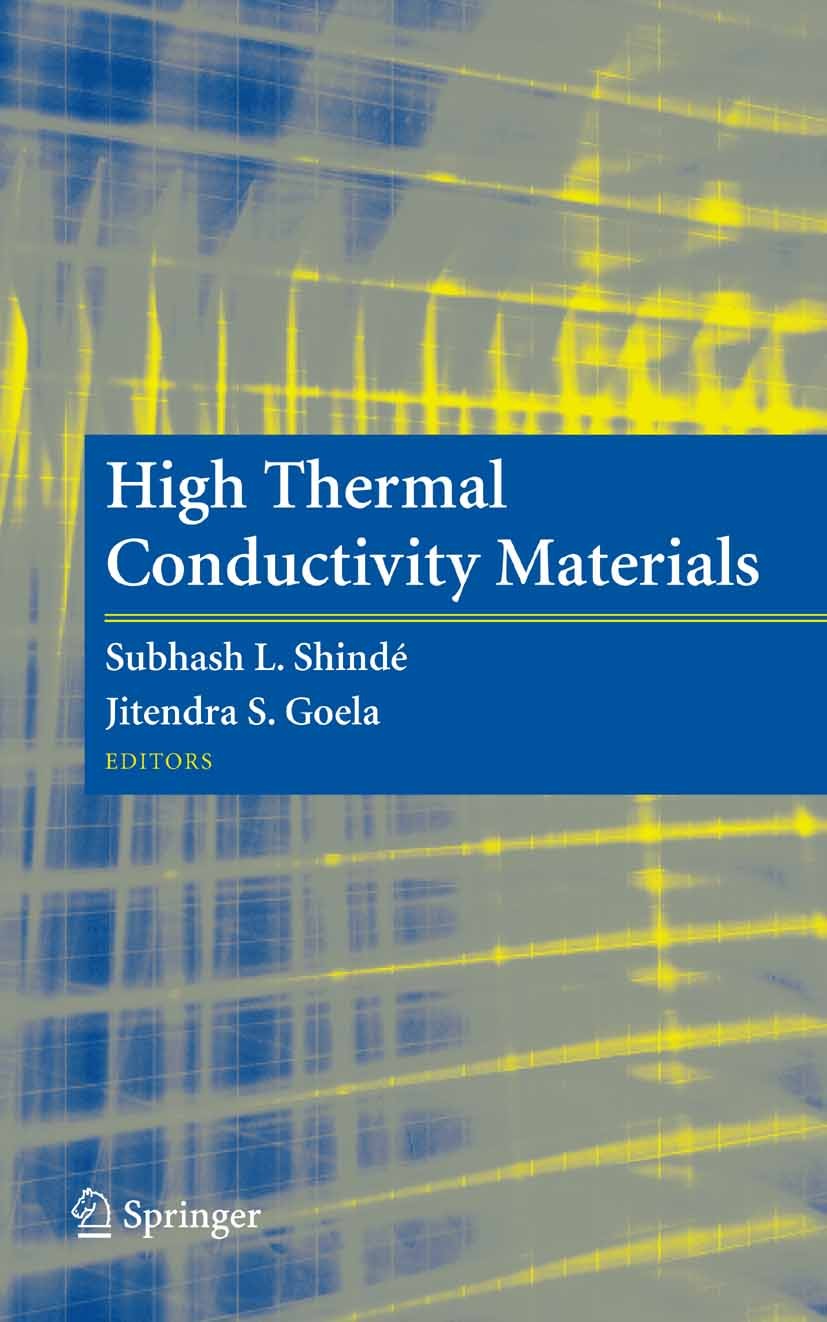| 书目名称 | High Thermal Conductivity Materials |
| 编辑 | Subhash L. Shindé,Jitendra S. Goela |
| 视频video | http://file.papertrans.cn/427/426532/426532.mp4 |
| 概述 | Covers the basic understanding of thermal conduction mechanisms in various high thermal conductivity materials including diamond, cubic boron nitride, and also the latest material like carbon nanotube |
| 图书封面 |  |
| 描述 | Thedemandfore?cientthermalmanagementhasincreasedsubstantiallyover the last decade in every imaginable area, be it a formula 1 racing car suddenly braking to decelerate from 200 to 50 mph going around a sharp corner, a space shuttle entering the earth’s atmosphere, or an advanced microproc- sor operating at a very high speed. The temperatures at the hot junctions are extremely high and the thermal ?ux can reach values higher than a few 2 hundred to a thousand watts/cm in these applications. To take a speci?c example of the microelectronics area, the chip heat ?ux for CMOS microp- cessors, though moderate compared to the numbers mentioned above have 2 already reached values close to 100 W/cm , and are projected to increase 2 above 200 W/cm over the next few years. Although the thermal mana- ment strategies for microprocessors do involve power optimization through improved design, it is extremely di?cult to eliminate “hot spots” completely. This is where high thermal conductivity materials ?nd most of their appli- tions, as “heat spreaders”. The high thermal conductivity of these materials allows the heat to be carried away from the “hot spots” very quickly in all directions thereby “ |
| 出版日期 | Book 2006 |
| 关键词 | boron; carbon; carbon nanotube; crystal; heat transfer; oxygen; wave |
| 版次 | 1 |
| doi | https://doi.org/10.1007/b106785 |
| isbn_softcover | 978-1-4419-1956-4 |
| isbn_ebook | 978-0-387-25100-4 |
| copyright | Springer-Verlag New York 2006 |
 |Archiver|手机版|小黑屋|
派博传思国际
( 京公网安备110108008328)
GMT+8, 2026-1-3 10:51
|Archiver|手机版|小黑屋|
派博传思国际
( 京公网安备110108008328)
GMT+8, 2026-1-3 10:51


